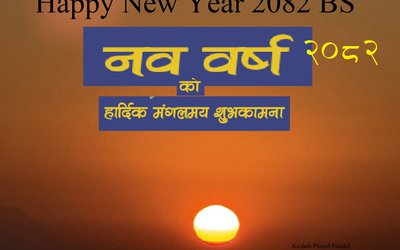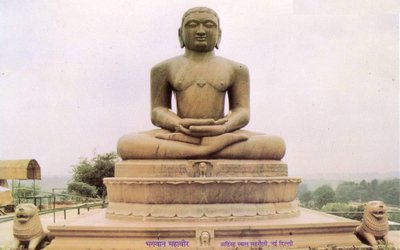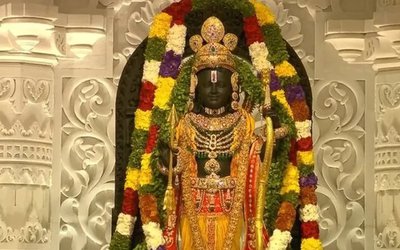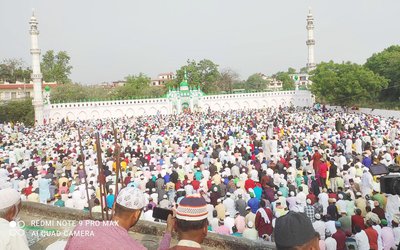
Shri Swasthani Brata Katha is a popular ritual observed in Nepal in the Magh month (January – February) during winter. The ritual is dedicated to Goddess Shree Swasthani, a Goddess known to grant wishes of her devotees, and Madhav Narayan.
Swasthani Brata 2025 is from January 13 to February 12. The month long telling of the tales are dedicated to the Goddess and the stories that are mainly narrated are those of Swasthani Devi, Lord Shiva other Gods. The Brata is observed from Paush Purnima to Magh Purnima as per traditional Hindu Calendar followed in Nepal. (January - February).
Goddess Shree Swasthani
Goddess Shree Swasthani is usually portrayed as a four-handed deity with charka, trishul, sword and lotus in each hand sitting at the center while Ashta Matrika or eight deities of power – Mahakali, Vaishnavi, Brahmi Maheshwari, Kameshwari, Barahi, Indrayani and Chamunda painted around her.
It is believed that Goddess Swasthani helped Goddess Sati overcome her troubles after she burned herself at Daksha Yagna after hearing her husband, Lord Shiva, being insulted. As per this legend Goddess Swasthani helped Sati overcome the troubles and then to reincarnate and win over Lord Shiva as her husband again.
Shree Swasthani Brata Katha book contains the divine leelas of Swasthani Devi and this is read in the month.
Swasthani Katha
The stories mainly revolve around the theme – how some devotees due to ignorance take the side of Adharma and are later rescued by the Goddess. Some stories narrate who the goddess rescues her devotees. A major highlight in the stories is the prominence of Swasthani Devi over other gods in the Hindu Pantheon.
In the first few chapters of the 31-chapter book, episodes related to Lord Shiva’s wife Sati Devi’s sufferings and her bearing them with courage and, eventually, Shree Swasthani rescuing her from her troubles and agonies, are explained.
Swasthani Brata
During Swasthani Katha, Hindu married women observe brata or fasting for the wellbeing of their husbands and unmarried women observe the Vrata in order to get a good husband. Women wear red colored clothes and bangles during the one-month period as it is believed that red is a sign of good luck. The Brata is observed without break for one month by many Hindus.
The month long rituals associated with Swasthani Katha takes place on the bank of rivers.
In Kathmandu the festival takes place at Salinadi, a river associated with the Swasthani brata katha, situated in Sankhu.
During the holy period, in the morning or evening the Goddess is worshipped by family members, amid chanting of holy hymns from the book Shree Swasthani Brata Katha which narrates the divine leelas of Swasthani Devi. After the chanting of mantras stories are read by an elderly male or female member.
During the Vrata period, after early morning shower the pooja of Shree Swasthani begins. In the evening chanting of brata katha or stories is a must. The routine shouldn’t break. It should go on uninterrupted for one month from the date of commencement. At the completion of chanting hymns, flowers and fruits are to be distributed among all those listening to brata katha.
On the concluding day of puja on a copper plate the holy symbol of Om is painted and a Shivling using mud is erected on it. Later, pooja of the Shivling takes place and this concludes the Shree Swasthani Brata Katha.
During Swasthani, the devotees fast for a month, worshipping Goddess Swasthani, reading Swasthani Bratakatha (story of the Goddess) and taking only one meal a day.
Altogether 100 devotees, 83 women and 17 men, are taking part in fasting process this year, he said.
“We have managed to maintain physical distance among the fasting devotees and we are trying to manage a YouTube online for the devotees,” he added.
He further said “We are only focusing to manage fasting process preventing infection among the fasting men women, so we like to urge all devotees who are planning to visit Salinadi festival not to visit it this year”.
The Sali River has a special significance during this fasting as it is also mentioned in the Swasthani Bratakatha (story) as a sacred, healing and wish fulfilling place.
As mentioned in the story, a leprosy victim Chandrawati regained her health, social status and good fortune after worshipping goddess Swasthani and taking holy dips here.
The story of Swasthani mentions King Nabaraj ruling the country called Labanya. Labanya is the old name of Sankhu which once was a separate kingdom, Shrestha said.
Nabaraj became a king after his mother observed Swasthani fasting. His consort Chandrawati became a leper after insulting goddess Swasthani. Later, she became remorseful and worshipped the goddess which made her healthy again, according to the story.
There stands a large rock at the centre of the Sali River which people worship as the symbol of Chandrawati.
- KOICA Concludes Integrated Rural Development Project Worth 4.7 Million USD
- Apr 25, 2025
- Budget session Of Federal Parliament Begins Today
- Apr 25, 2025
- 10th Memorial Day Of Gorkha Earthquake
- Apr 25, 2025
- Kathmandu's Maximum Temperature Likely To Dip From Sunday
- Apr 25, 2025
- Budget Session Of Federal Parliament Commencing On Friday
- Apr 24, 2025















